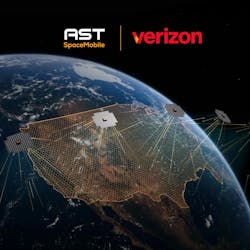AST SpaceMobile signs agreement with Verizon to bring direct-to-cellular satellite service by 2026
Summary Points
- AST SpaceMobile and Verizon signed a commercial agreement to provide direct-to-cellular satellite service starting in 2026.
- The partnership combines Verizon’s 850 MHz spectrum with AST SpaceMobile’s low Earth orbit satellite network.
- The system connects directly to standard smartphones without specialized hardware.
MIDLAND, Texas - AST SpaceMobile Inc., a Midland, Texas-based company developing a space-based cellular broadband network accessible directly by standard smartphones, announced a definitive commercial agreement with Verizon to provide direct-to-cellular service beginning in 2026. The partnership aims to expand Verizon’s network coverage by integrating AST SpaceMobile’s low Earth orbit (LEO) satellites with Verizon’s terrestrial infrastructure.
Under the agreement, Verizon will use its 850 MHz spectrum in combination with AST SpaceMobile’s LEO network to deliver continuous connectivity to customers in remote and underserved areas across the continental United States. The system is designed to keep users connected whether they are in urban centers, rural communities, or off-grid locations.
AST SpaceMobile’s constellation features the largest commercial communications arrays ever deployed in LEO. The system connects directly to unmodified smartphones without the need for specialized equipment and operates across low- and mid-band spectrum globally.
Related: FAA seeks industry input on cost-effective runway safety lighting systems
"This agreement will extend the scope of Verizon’s 850 MHz premium low-band spectrum into areas of the U.S. that would benefit from the ubiquitous reach of space-based broadband technology," said Abel Avellan, founder, chairman and CEO of AST SpaceMobile.
The partnership follows successful trials where AST SpaceMobile and Verizon demonstrated direct voice, video, and RCS messaging between standard smartphones via the company’s BlueBird satellite. A recent test connected a Verizon smartphone in Texas with another in New Jersey using satellite-to-cell technology, marking a milestone in seamless space-to-ground communications.
"By integrating our expansive, reliable, robust terrestrial network with this innovative space-based technology, we are paving the way for a future where everything and everyone can be connected, regardless of geography," said Srini Kalapala, Verizon senior vice president of technology and product development.
